History
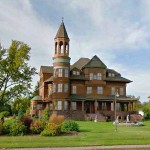 While in Superior, Wisconsin in late August, we drove by a beautiful home, called the Fairlawn Mansion. I have always been intrigued by mansions. It isn’t that I would like to live in one necessarily, but I very much enjoy going through them. We didn’t have time to go through this one, unfortunately, so I have been doing some research on it. My research has helped to tie a couple of things together for me about my hometown. I was born in Superior, but that doesn’t necessarily mean that I know a lot about the history there…especially since we moved when I was three years old. I never knew who the mayors were for instance, or why some of the places were named what they are.
While in Superior, Wisconsin in late August, we drove by a beautiful home, called the Fairlawn Mansion. I have always been intrigued by mansions. It isn’t that I would like to live in one necessarily, but I very much enjoy going through them. We didn’t have time to go through this one, unfortunately, so I have been doing some research on it. My research has helped to tie a couple of things together for me about my hometown. I was born in Superior, but that doesn’t necessarily mean that I know a lot about the history there…especially since we moved when I was three years old. I never knew who the mayors were for instance, or why some of the places were named what they are.
I knew about Pattison Park, but never knew how it got it’s name. It was named after Superior’s three time mayor, Martin Pattison. He was a lumber and mining baron, and he built the Fairlawn Mansion as the family home for himself, his wife and their six children. Construction began in 1889 and was completed in 1891. It is known as one of America’s castles, and it definitely looks the part. It is a 42 room mansion with a four story turret complete with a widow’s watch overlooking the bay at the tip of Lake Superior. The cost of building the mansion was $150,000 at that time, which is equivalent to well over $3,000,000 today. The grounds are adorned with several gardens filled with flowers in the summertime.
The family lived in the home until Martin’s passing in 1918, and the home sat vacant until 1920. From 1920 to 1962, this mansion served as a children’s home and house for the less fortunate. To me that seems a bit odd. Not that the house would be used in this manner, but that the people who benefitted from it’s use in those days would be called less fortunate…since they did have an amazing home to live in. Of course, if they were orphaned, they would be less fortunate. Nevertheless, they had an amazing house to live in. I can imagine that if those walls could talk, they would have many stories of the laughter of children to tell, because the mansion housed over 2000 children during it’s 42 years as a children’s home.
There are always a few ghost stories associated with mansions, it seems, and this mansion is no exception. It is said that a former maid, who was later killed by her husband and a little girl who supposedly drowned in the pool both haunt the mansion to this day, but I don’t believe in ghosts, so I say that only in passing, since it is a story connected to this beautiful house. Neither of these accounts can be substantiated, and there is no record of anyone dying there. I’m not sure why it is always the mansions that seem to carry the haunted status, because quite likely every older home and even many of the newer ones have had a resident die in them, and I’m sure quite a few of the deaths involved murder, but you just never hear of ghosts 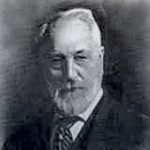 haunting those places. Maybe the story just doesn’t fit in with a dinky little house.
haunting those places. Maybe the story just doesn’t fit in with a dinky little house.
Rather than the supposed ghosts a mansion might have, I prefer to think of the happy times the mansion got to see over the years. These days the house is a museum, and hosts many weddings. I can imagine that the ballroom would be fabulous, and such a romantic place to have a wedding party. If the couple planned it right, theirs could be a replica of a traditional high society wedding of days gone by. I would imaging that if these walls could talk, we could hear stories of beautiful gowns, elegant people, and beautiful music. This mansion has such a unique history, that I would really love to sit and hear all it one day, because the stories would have to be simply amazing.
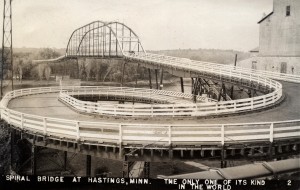 I never knew my dad to be a big sentimental saver, who kept every little knick knack or scrap of paper, so when he saved something, I have to think that it meant something, or was something special to him. Pictures were the exception, of course, but I was surprised when I found a couple of post cards from his sister, my Aunt Ruth when she was on a trip in 1946. She doesn’t say who she was with, but since she was married at the time, I have to assume that she was with my Uncle Jim. One post card, in particular, stood out for me, mostly I suppose because I like things of historic value. The post card was of the Spiral Bridge in Hastings, Minnesota. Hastings is in southern Minnesota, and while I would have a hard time believing that my dad never made the trip down to see this famous wagon bridge, I have no real proof that he was ever there, but I believe Aunt Ruth went over it on the trip back in May of 1946. Still, whether Dad went over it or not, he must have thought it quite interesting, because he kept the card the rest of his life. Dad was always interested in the historic value of things too, and I’m sure that is where my interest in those things began. He took the time to show us many historic markers and places of interest.
I never knew my dad to be a big sentimental saver, who kept every little knick knack or scrap of paper, so when he saved something, I have to think that it meant something, or was something special to him. Pictures were the exception, of course, but I was surprised when I found a couple of post cards from his sister, my Aunt Ruth when she was on a trip in 1946. She doesn’t say who she was with, but since she was married at the time, I have to assume that she was with my Uncle Jim. One post card, in particular, stood out for me, mostly I suppose because I like things of historic value. The post card was of the Spiral Bridge in Hastings, Minnesota. Hastings is in southern Minnesota, and while I would have a hard time believing that my dad never made the trip down to see this famous wagon bridge, I have no real proof that he was ever there, but I believe Aunt Ruth went over it on the trip back in May of 1946. Still, whether Dad went over it or not, he must have thought it quite interesting, because he kept the card the rest of his life. Dad was always interested in the historic value of things too, and I’m sure that is where my interest in those things began. He took the time to show us many historic markers and places of interest.
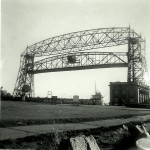 The Spiral Bridge was built over the Mississippi River in 1895 as a wagon bridge. It was built with a large spiral ramp on the south end to allow enough clearance for the river traffic to pass below the bridge. These days we would have a vertical lift bridge, such as the one at Duluth Harbor, or a draw bridge, like the Tower Bridge, but back then, they didn’t have the capability to build such a bridge and the river traffic had to get through. The Spiral Bridge easily handled the river traffic and the wagon traffic. In 1895, there weren’t many cars around, and most people still traveled by horse and wagon. A bridge that had too steep a rise would be really hard for horses, so it was necessary, for the sake of continuing the movement of river traffic, to create a ramp of sorts so the bridge was high enough. The spiral ramp on the Spiral Bridge did just that.
The Spiral Bridge was built over the Mississippi River in 1895 as a wagon bridge. It was built with a large spiral ramp on the south end to allow enough clearance for the river traffic to pass below the bridge. These days we would have a vertical lift bridge, such as the one at Duluth Harbor, or a draw bridge, like the Tower Bridge, but back then, they didn’t have the capability to build such a bridge and the river traffic had to get through. The Spiral Bridge easily handled the river traffic and the wagon traffic. In 1895, there weren’t many cars around, and most people still traveled by horse and wagon. A bridge that had too steep a rise would be really hard for horses, so it was necessary, for the sake of continuing the movement of river traffic, to create a ramp of sorts so the bridge was high enough. The spiral ramp on the Spiral Bridge did just that.
With his interest in historic, and unique things, I can hardly imagine that this historic bridge would be the thing my dad would have missed. Sadly, it is not something we can go see today, because it was torn down in 1951 to make way for a high bridge that would provide a straighter entry and make modern day traffic flow more smoothly. The spiral ramp, while a great idea for wagons, slowed automobile traffic considerably. With the  modern day automobile, came the need for a new bridge, and the Spiral Bridge, while historic and unique, was nevertheless obsolete. I suppose the builders of the new bridge were excited to see a brand new, modern bridge take the place of the old, outdated bridge, but I like antiques. Houses, bridges, furniture, and even cars, provided that I don’t have to drive them much, all hold my interest, but there are people who prefer to have everything very modern. I suppose too, that it was a necessity, and they just couldn’t move the new one to a different location. Whatever the case may have been, I’m glad my Aunt Ruth and Uncle Jim got to see it, and I really hope my dad and the rest of the family did too. It was a little bit of history that I know they would have loved. Bridges are cool, but the Spiral Bridge was amazing.
modern day automobile, came the need for a new bridge, and the Spiral Bridge, while historic and unique, was nevertheless obsolete. I suppose the builders of the new bridge were excited to see a brand new, modern bridge take the place of the old, outdated bridge, but I like antiques. Houses, bridges, furniture, and even cars, provided that I don’t have to drive them much, all hold my interest, but there are people who prefer to have everything very modern. I suppose too, that it was a necessity, and they just couldn’t move the new one to a different location. Whatever the case may have been, I’m glad my Aunt Ruth and Uncle Jim got to see it, and I really hope my dad and the rest of the family did too. It was a little bit of history that I know they would have loved. Bridges are cool, but the Spiral Bridge was amazing.
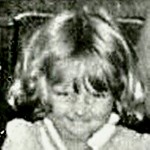 So many of us would love to know more about our family and the stories from the past, but by the time we realize that we are interested in those stories, the people who could tell us about them are gone, and it is too late. I feel very blessed that my grandparents had nine children, all spaced roughly 2 years apart. My aunt, Sandy Pattan was the youngest of those children. While the older children lived some things that Aunt Sandy was to young to have lived, she was nevertheless, not to young to have heard all the stories, and she was just curious enough to be a willing listener. While her older siblings were growing up and doing all the things a kid sister finds very cool, Aunt Sandy was watching with curiosity. She wanted to grow up just like her sisters, and she loved watching her brothers’ antics, as well as, their kindnesses. She also watched her parents, aunts, uncles, cousins, and grandparents…and she listened to the stories that were told.
So many of us would love to know more about our family and the stories from the past, but by the time we realize that we are interested in those stories, the people who could tell us about them are gone, and it is too late. I feel very blessed that my grandparents had nine children, all spaced roughly 2 years apart. My aunt, Sandy Pattan was the youngest of those children. While the older children lived some things that Aunt Sandy was to young to have lived, she was nevertheless, not to young to have heard all the stories, and she was just curious enough to be a willing listener. While her older siblings were growing up and doing all the things a kid sister finds very cool, Aunt Sandy was watching with curiosity. She wanted to grow up just like her sisters, and she loved watching her brothers’ antics, as well as, their kindnesses. She also watched her parents, aunts, uncles, cousins, and grandparents…and she listened to the stories that were told.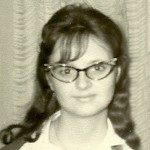
Flash forward to today, and to her niece…me, who is curious about all those events from the past. I have asked other family members about those events, and received a little bit of information, but my Aunt Sandy has an amazing mind. Not to brag…but I think I take after her in that area. Once a story is told to her…she stores in I her memory files for all time, and she can pull it out and accurately pass on the details to those around her, who want to know, and are blessed enough to realize that she is an such amazing store of information. There is just no need to be in the dark about our family history, because if the information is out there, Aunt Sandy probably has it.
Aunt Sandy retired a while back, and is busy with a lot of projects, but she has it in her heart to put some of 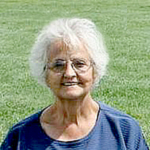 this information on paper, so that it can be passed on to other interested family members. I really hope she does that, because it is so easy for those stories to get lost and forgotten in time. Those who remember them pass away, and if they didn’t tell others the stories, they are lost. Aunt Sandy has a real talent for remembering the events as they happened, and for telling them in a way that makes them interesting to the listener. I have very much enjoyed listening to her accounts of the events of her life, and the ones that shaped it…as well as mine, and the rest of the family. Next time you get an opportunity, I strongly recommend that you take the time to talk to her about your history. You will be amazed at what you might find out. Today is Aunt Sandy’s birthday. Happy birthday Aunt Sandy!! Have a great day!! We love you!!
this information on paper, so that it can be passed on to other interested family members. I really hope she does that, because it is so easy for those stories to get lost and forgotten in time. Those who remember them pass away, and if they didn’t tell others the stories, they are lost. Aunt Sandy has a real talent for remembering the events as they happened, and for telling them in a way that makes them interesting to the listener. I have very much enjoyed listening to her accounts of the events of her life, and the ones that shaped it…as well as mine, and the rest of the family. Next time you get an opportunity, I strongly recommend that you take the time to talk to her about your history. You will be amazed at what you might find out. Today is Aunt Sandy’s birthday. Happy birthday Aunt Sandy!! Have a great day!! We love you!!
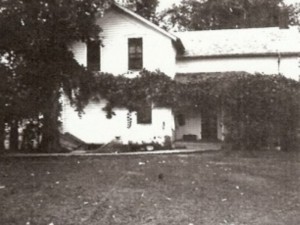 One of the things about family history that especially holds my interest is locating the house where someone was born. It isn’t that I always set out to locate the house, but when one falls in my lap, I am especially excited…and that seems to happen a lot. There is a feeling of almost wonder when I find the exact place where one of my ancestors was born…especially when it is someone very dear to me. I don’t know exactly why that is exciting to me, except that it’s not every day that you find your self looking at the exact place that your parent or grandparent was born.
One of the things about family history that especially holds my interest is locating the house where someone was born. It isn’t that I always set out to locate the house, but when one falls in my lap, I am especially excited…and that seems to happen a lot. There is a feeling of almost wonder when I find the exact place where one of my ancestors was born…especially when it is someone very dear to me. I don’t know exactly why that is exciting to me, except that it’s not every day that you find your self looking at the exact place that your parent or grandparent was born.
Home births are making a comeback these days, and I suppose that more and more people will be able to say that one specific house is where they were born. I very seldom feel the same way about the hospital where someone was born. Maybe that is because it is not very unique. Many other babies were born there too. I do think that I would feel that way about the hospital I was born in, because that is personal, but the one my kids and grandkids were born in, is also the place where a number of my loved ones passed away, and that feels different to me. I believe that my kids and grandkids will feel a closeness to the Wyoming Medical Center, because it is their birthplace, and that will make it special to them.
The house where someone was born, however, will always hold a special interest to me. I have to wonder what those walls to tell if they could talk. How did the family feel as each child joined the family? This house was where my Great Aunt Mina Schumacher, my Great Uncle Fred Schumacher, and my great aunts, Bertha and Elsa Schumacher were born. It’s also possible that my Great Aunt Marie Schumacher, who passed away at three years of age, could have been born in this house. My guess is that there was much happiness there, as well as some sadness. That is the way it is in any home…life happens there. That house saw the children playing and growing up, and the new births, one by one, and the family grew to it’s full size.
Before they would move to North Dakota, I’m sure there were many memories made there, but by the time Bertha and Elsa would return to the area for a visit, they no longer remembered the home where they were 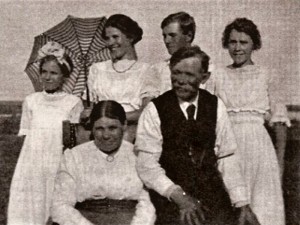 born, nor the wonderful times the family had there. Bertha wrote about that in her journal, so I have a feeling that those lost memories made her feel a bit sad, just like they would for me. I have a feeling that Aunt Bertha and I were quite a bit alike, and so the things that she thought were important to remember are the same kinds of things that I think are important. I am always very saddened by memories lost. Even if it is about people that I never knew, because everyone has a story, and someone, somewhere feels like their story is important, and once it is lost, it is very hard to find again. If no one ever wrote it down or told it, no one remembers. I guess that is why finding the house where someone was born is so important…it is where their story started.
born, nor the wonderful times the family had there. Bertha wrote about that in her journal, so I have a feeling that those lost memories made her feel a bit sad, just like they would for me. I have a feeling that Aunt Bertha and I were quite a bit alike, and so the things that she thought were important to remember are the same kinds of things that I think are important. I am always very saddened by memories lost. Even if it is about people that I never knew, because everyone has a story, and someone, somewhere feels like their story is important, and once it is lost, it is very hard to find again. If no one ever wrote it down or told it, no one remembers. I guess that is why finding the house where someone was born is so important…it is where their story started.
 I love that I have connected with so many family members over the past few years. It seems like each connection brings another connection, and then it keeps blossoming into more and more connections. Yesterday, I got an email from my cousin, Tracey Schumacher Inglimo, telling me of some information she came across in FamilySearch.Org. Some of it I already had, but there was quite a bit of it that I didn’t. It was like opening an early Christmas present. It was given to me for no reason other than to further the family tree for all of us. I seriously can’t tell you how big a blessing Tracey has become, and she continues to grow more and more important to my life every day. It was the connection with her that started all the open doors in the Schumacher family in the first place. From there, the Schumacher side of the family has grown to the point where I’m not sure just how many we know…and that is awesome!!
I love that I have connected with so many family members over the past few years. It seems like each connection brings another connection, and then it keeps blossoming into more and more connections. Yesterday, I got an email from my cousin, Tracey Schumacher Inglimo, telling me of some information she came across in FamilySearch.Org. Some of it I already had, but there was quite a bit of it that I didn’t. It was like opening an early Christmas present. It was given to me for no reason other than to further the family tree for all of us. I seriously can’t tell you how big a blessing Tracey has become, and she continues to grow more and more important to my life every day. It was the connection with her that started all the open doors in the Schumacher family in the first place. From there, the Schumacher side of the family has grown to the point where I’m not sure just how many we know…and that is awesome!!
As I said, some of the information was information that I already had, but some of it was new to me. One of the things I found most exciting is that Tracey had found, what I now believe to be the long lost picture of Christian Schumacher, who is my great great uncle, and the brother of my great grandfather, Carl Schumacher. According to my great aunt, Bertha Schumacher Hallgren, “Christian was a soldier (he joined very young, perhaps 20), straight and tall when he stood in his uniform, the photo of which Elsa and I used to love to look at when we were small. He served in the first World War, having stayed in the reserves  throughout the years, and fighting men became so few in the closing years of the conflict that Germany had to call up all the reserves, regardless of age. When the Russians entered Poland, he was captured and never heard from again. He had married a Polish girl and lived just inside the border of the two countries, operating a wholesale grocery business. They never had children and she did not continue writing after this tragedy.”
throughout the years, and fighting men became so few in the closing years of the conflict that Germany had to call up all the reserves, regardless of age. When the Russians entered Poland, he was captured and never heard from again. He had married a Polish girl and lived just inside the border of the two countries, operating a wholesale grocery business. They never had children and she did not continue writing after this tragedy.”
It is my hope that the picture Tracey found online is the same one Aunt Bertha mentioned in her story. It had seemed all but lost, and to find it among the things Tracey had found excited me beyond measure, as I know it will for all the other family members who have been hoping to see it. It is exactly what was described to me, and I know that there are others in the family who have seen it, so I hope they will be able to confirm that is the one they had seen.
I have found, as I have taken this journey of discovery to find other family members and more information on our history, that two heads…or ten, are better than one. They are far better, in fact. We all tend to look different places, and look for different information, and yet before you know it, the information found by one turns out to be the information that someone else was searching for. I guess I would have to say that my main reason for connecting with family is the family…for sure, but finding out so much more about the family is definitely a plus. So, today I want to thank Tracey for giving me and the rest of the family such an amazing gift. We all love you very much!!
 My Uncle Jim Richards has always been a soft spoken man. To me he always seemed shy, and maybe he is, but over the last year, have come across information that has made me realize that while he might have been shy, he was also a very strong man…a man of deep convictions, who valued has family and took care of them when they needed it the most. I can’t imagine growing up without my dad, and yet when Uncle Jim’s dad died, an eight year old Uncle Jim stepped up to the plate, and did his very best to fill the shoes his dad had left behind. I’m sure that at first the whole head of the household thing seemed almost cute to his mom, but as the years went on, and he continued to show a leadership ability far beyond his years, his mother learned to depend on this son who was the man of the house before he was even old enough to be a man. He proved himself to be the person everyone could count on.
My Uncle Jim Richards has always been a soft spoken man. To me he always seemed shy, and maybe he is, but over the last year, have come across information that has made me realize that while he might have been shy, he was also a very strong man…a man of deep convictions, who valued has family and took care of them when they needed it the most. I can’t imagine growing up without my dad, and yet when Uncle Jim’s dad died, an eight year old Uncle Jim stepped up to the plate, and did his very best to fill the shoes his dad had left behind. I’m sure that at first the whole head of the household thing seemed almost cute to his mom, but as the years went on, and he continued to show a leadership ability far beyond his years, his mother learned to depend on this son who was the man of the house before he was even old enough to be a man. He proved himself to be the person everyone could count on.
Just a year before his dad’s passing, while the nation was in the middle of World War II, Uncle Jim found himself the younger brother of a war hero who had been killed in action while storming the beaches of Normandy, France…his brother, Dale Richards. There was not much that a young boy of seven years could do to ease the pain his parents felt, and there was not enough money to bring his brother home, so he was buried in Normandy along with many other war dead. I can’t imagine the pain that must have inflicted on the family, and how one seven year old boy felt helpless to stop the hurting that had come upon his family. Then to add to the pain, his dad passed away just one year later. The sadness must have been overwhelming for them. I think too, that it probably shaped Uncle Jim’s life into the kind of life it was…one of close family ties, and helping each other whenever possible.
I don’t know if Uncle Jim will ever be able to go over to France and visit the grave of his war hero brother, but after hearing about the facts surrounding the loss of his brother, I set out to find out what I could. I didn’t have very much to go on…just his name, but before long, with the help of Aunt Sandy Pattan, Ancestry.com and Findagrave.com, I found what I was looking for…the location of the grave of Dale Richards, and even better, a picture of his grave. At the family Christmas party, I was able to give that picture to Uncle Jim. It was an 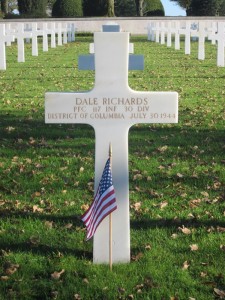 emotional moment for his whole family, and I was so happy to be able to give him that gift, because he was such a sweet man who had done so much for so many others, asking nothing for himself. The picture will never replace the loss of his brother and dad all those years ago, but for the man that had become my uncle, I hope it was a comfort, because his brother’s grave is in a beautiful, well kept honorable place, and I’m sure that is just what Uncle Jim would want for his brother.
emotional moment for his whole family, and I was so happy to be able to give him that gift, because he was such a sweet man who had done so much for so many others, asking nothing for himself. The picture will never replace the loss of his brother and dad all those years ago, but for the man that had become my uncle, I hope it was a comfort, because his brother’s grave is in a beautiful, well kept honorable place, and I’m sure that is just what Uncle Jim would want for his brother.
Uncle Jim will always be a quiet, soft spoken man, who carries a big load on his shoulders. It’s not that his life these days is so hard, but rather that he is the family patriarch…a lot like my dad was. The family looks to him for leadership, guidance, and emotional support. When things go wrong, he shows them the way to go, and when all is well, they all share in the joy of it together. Today is a day of joy. Today is Uncle Jim’s birthday. Happy birthday Uncle Jim!! Have a wonderful day!! We love you!!
 As the 25th anniversary of the Loma Prieta earthquake arrives, I am reminded of the time spent watching the footage of the aftermath. At that time, I had never been to California, and so I didn’t quite understand what I was seeing…but my parents knew. They had been there several times. They kept saying that a lot of people were probably dead on the Oakland Bay Bridge. As I looked at the pictures, and heard the reporter mistakenly describe the bridge, as simply collapsed, so I just didn’t get it. My parents kept saying, “That is a double road…don’t they understand that?” I guess they didn’t…and I didn’t either. They finally told me that it was a double deck bridge. Then I got it…in every sickening detail, I got it. People were trapped under tons of metal and concrete. Maybe their cars could have saved them, but it was doubtful. That was just too much weight. In the end, only one person was killed on the Oakland Bay bridge, because it was closed for retrofitting. The people on The Nimitz Expressway…also a double deck bridge, at the Cypress Street Viaduct, were not so lucky. That bridge also collapsed and when it did, it killed 42 of the total of 67 people killed in the Earthquake.
As the 25th anniversary of the Loma Prieta earthquake arrives, I am reminded of the time spent watching the footage of the aftermath. At that time, I had never been to California, and so I didn’t quite understand what I was seeing…but my parents knew. They had been there several times. They kept saying that a lot of people were probably dead on the Oakland Bay Bridge. As I looked at the pictures, and heard the reporter mistakenly describe the bridge, as simply collapsed, so I just didn’t get it. My parents kept saying, “That is a double road…don’t they understand that?” I guess they didn’t…and I didn’t either. They finally told me that it was a double deck bridge. Then I got it…in every sickening detail, I got it. People were trapped under tons of metal and concrete. Maybe their cars could have saved them, but it was doubtful. That was just too much weight. In the end, only one person was killed on the Oakland Bay bridge, because it was closed for retrofitting. The people on The Nimitz Expressway…also a double deck bridge, at the Cypress Street Viaduct, were not so lucky. That bridge also collapsed and when it did, it killed 42 of the total of 67 people killed in the Earthquake.
The day was October 17, 1989, the first game of the World Series was being played right there in San  Francisco at Candlestick Park between the two local teams…The Oakland Athletics and the San Francisco Giants. The people in the area were very excited and baseball was the only thing on their minds. The game was to start at 5:30pm, but that was not to be. The earthquake rated a magnitude 7.1 struck at 5:04pm. Game day would have to wait. Today, it was all hands on deck. And the first question on everyone’s mind was, “Is my family safe?” In that moment, all thought of baseball stopped, and everyone’s mind was on finding the victims…and, hopefully finding them alive.
Francisco at Candlestick Park between the two local teams…The Oakland Athletics and the San Francisco Giants. The people in the area were very excited and baseball was the only thing on their minds. The game was to start at 5:30pm, but that was not to be. The earthquake rated a magnitude 7.1 struck at 5:04pm. Game day would have to wait. Today, it was all hands on deck. And the first question on everyone’s mind was, “Is my family safe?” In that moment, all thought of baseball stopped, and everyone’s mind was on finding the victims…and, hopefully finding them alive.
I can’t say that I knew anyone who lived through the earthquake, nor anyone who died in it, but rather what I felt was how it impacted my parents at that time. I also felt that same impact on me when I visited San Francisco a few years later. I don’t think you can know an area where people were killed in an earthquake, or even visit that place and not feel something…not if you knew or remember the disaster that happened in that place. San Francisco is a beautiful place, with so much to see, but it is also a sad place where, over the years, the San Andreas fault has exploded over and  over again, leaving in its wake, the bodies of its victims…and the shattered lives of their families. I suppose there are people who can go there, and give no thought to that historical fact, but I am not one of those people. I think there are places when the memories of tragedies in the past lingers in an almost physical way. The ground becomes almost hallowed, deserving of respect for those who died there. Lives with so much promise, people with so much to live for, were wiped out in just 15 seconds…the 15 seconds that the earthquake was happening. That was all it took…just 15 seconds, and they were gone. That was 25 years ago today, and when I think of all the contributions those people could have made to the world, it makes me very sad indeed.
over again, leaving in its wake, the bodies of its victims…and the shattered lives of their families. I suppose there are people who can go there, and give no thought to that historical fact, but I am not one of those people. I think there are places when the memories of tragedies in the past lingers in an almost physical way. The ground becomes almost hallowed, deserving of respect for those who died there. Lives with so much promise, people with so much to live for, were wiped out in just 15 seconds…the 15 seconds that the earthquake was happening. That was all it took…just 15 seconds, and they were gone. That was 25 years ago today, and when I think of all the contributions those people could have made to the world, it makes me very sad indeed.
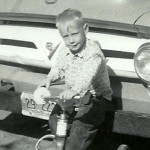 For many people, today might not necessarily mark anything so special, but for my husband, Bob Schulenberg, this is a good day. He was just a little boy of four years and three months, and didn’t know a thing about this at the time, and probably wouldn’t have cared if he had known, but down the road twelve years or so, he would have cared. Even when he did care, he wouldn’t have known the exact date or anything. I know, you wonder what in the world I am talking about. Well, it’s the El Camino. I just found out that the car Bob always wanted was first introduced on this day, October 16, 1958.
For many people, today might not necessarily mark anything so special, but for my husband, Bob Schulenberg, this is a good day. He was just a little boy of four years and three months, and didn’t know a thing about this at the time, and probably wouldn’t have cared if he had known, but down the road twelve years or so, he would have cared. Even when he did care, he wouldn’t have known the exact date or anything. I know, you wonder what in the world I am talking about. Well, it’s the El Camino. I just found out that the car Bob always wanted was first introduced on this day, October 16, 1958.
For a four year old Bob, that day held no significance, and even now, he doesn’t know that this is the 56th anniversary of the El Camino…but he soon will. I don’t recall just how long we owned our El Camino, but it was a long time, and it was definitely Bob’s vehicle. The seat would not go far enough forward for me to easily drive it, so I only did so when it was absolutely necessary. Needless to say, while it was one of Bob’s favorite cars, it really wasn’t mine. I don’t like to have my driving experience be a lot of work for me.
At the time of its introduction by Chevrolet, the El Camino was considered a car-truck hybrid vehicle. That is rather comical to me. A hybrid!! Really!! It was apparently inspired by the Ford Ranchero which had been on the market for two years at the time of the El Camino’s debut. They said it “rides and handles like a convertible, yet hauls and hustles like the workingest thing on wheels.” It may have been a good hauler, but in my opinion, it was nothing like a convertible, and I’ve had one, so I do know.
The El Camino didn’t really catch on, and the model built on an Impala chassis was discontinued in 1960. It was re-introduced in 1964 on the Chevelle frame, and in 1968 they upgraded to the SS version which made it a 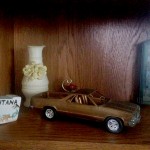 sport truck. With these changes, the El Camino became one of the iconic muscle cars of the late 1960s and 1970s. It seems every guy wanted one of the newest models. I guess you had to be a guy to appreciate it so much. The El Camino was dropped permanently in 1987, and while Pontiac thought about re-introducing it in 2008, their financial difficulties cause that to be dropped from the plan in 2009.
sport truck. With these changes, the El Camino became one of the iconic muscle cars of the late 1960s and 1970s. It seems every guy wanted one of the newest models. I guess you had to be a guy to appreciate it so much. The El Camino was dropped permanently in 1987, and while Pontiac thought about re-introducing it in 2008, their financial difficulties cause that to be dropped from the plan in 2009.
I’m glad Bob got to have the car-truck of his dreams, even if it wasn’t my very favorite, but I can’t say that I was sorry when he sold it. It had done its duty, and served its purpose, but it was time for him to have a real truck. I can’t say I like driving his pickup either, but as long as he’s happy with it, I’m happy too. Here’s to the El Camino…1970s muscle car, and the car of a little boy’s dreams.
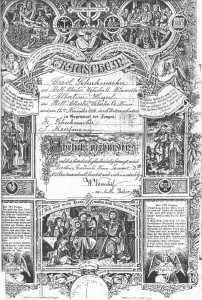 After reconnecting with so many of my Schumacher cousins on Facebook, Ancestry, and now in person, I have begun to wonder more about the Schumacher ancestry even further back. For a number of years, I have been stuck in the 1800’s on the Schumacher side of the family, just hoping for a break, and I think I may now know why. In researching the name Schumacher, I find that Schumacher or Schuhmacher is an occupational surname. It is, of course, the German word for shoemaker. Both spellings can be used as surnames, with Schumacher being the more common one, however, only the variant with an “h” can also be used as a job description in modern German spelling. That fact is of vital importance to my family’s actual history, and it could be the reason I have hit a wall in my search.
After reconnecting with so many of my Schumacher cousins on Facebook, Ancestry, and now in person, I have begun to wonder more about the Schumacher ancestry even further back. For a number of years, I have been stuck in the 1800’s on the Schumacher side of the family, just hoping for a break, and I think I may now know why. In researching the name Schumacher, I find that Schumacher or Schuhmacher is an occupational surname. It is, of course, the German word for shoemaker. Both spellings can be used as surnames, with Schumacher being the more common one, however, only the variant with an “h” can also be used as a job description in modern German spelling. That fact is of vital importance to my family’s actual history, and it could be the reason I have hit a wall in my search.
According to my grandparent’s, Carl and Albertine (Henriette) Hensel Schumacher, marriage certificate, Carl’s last name was actually spelled Schuhmacher…the actual job description, as well as an occupational surname. I had long known of the difference in the spelling, because my Uncle Bill Spencer had sent me a copy of the marriage certificate years ago, but I didn’t know the distinction that one letter held. I didn’t know that it changed the name from just a name to an occupation. If, as I suspect, Carl was encouraged to Americanize the spelling when he came to America, then anyone searching for information on Carl Schuhmacher, would most likely hit a wall…just as I have done. Americanizing surnames was a very common practice in early American immigration history, and sometimes the name the person ended up with was nothing like their real name. It is a serious frustration for the family history researcher.
This now causes me to wonder if our family might be related to such notable people as Eugen Schuhmacher (1906–1973), German zoologist and pioneer of animal documentaries, Irma Heijting-Schuhmacher (born 1925), Dutch freestyle swimmer, or John Schuhmacher (born 1955), American football player. Perhaps our 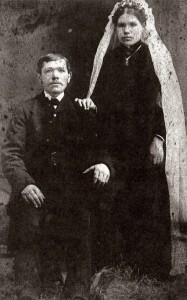 search for our roots should be heading in a completely different direction, because unfortunately, no one told the people in the nation these people immigrated from that they should change their name too, so the lineage would be preserved. Perhaps this spelling of the name will open the doors that have for so long been locked. Only time will tell on this matter, as I delve into the research to see where it will lead me. I hope that it will lead me to the next level…the one after Carl’s dad, my 2nd great grandfather, Johann Schuhmacher, and beyond.
search for our roots should be heading in a completely different direction, because unfortunately, no one told the people in the nation these people immigrated from that they should change their name too, so the lineage would be preserved. Perhaps this spelling of the name will open the doors that have for so long been locked. Only time will tell on this matter, as I delve into the research to see where it will lead me. I hope that it will lead me to the next level…the one after Carl’s dad, my 2nd great grandfather, Johann Schuhmacher, and beyond.
It is so hard for me to hit a brick wall in the family history line, because I want so badly to be able to take each line way back. It has become an obsession I suppose, just like it was for Uncle Bill. Once you get started you don’t want to stop until you reach your goal. Ancestral lines can be hard enough to follow, as the records kept were not as good, or have been lost over the years, but when you add the fact that the names were most likely changed, you find yourself hitting the brick wall that I have hit. Just like the grade school child who spells a totally different word for the teacher, you find yourself realizing the importance of one letter.
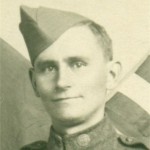 When we think of war, we usually think of planes and tanks, bombs and guns, but lately I have been wondering just what the life of a foot soldier was like. My grandfather served in World War I, and after reading a little bit about what it was like for the men in the trenches, I find myself feeling very thankful that my grandfather was a cook. I don’t know how he got that position, considering that so many soldiers were needed, and the number needed grew daily, or even hourly, I just don’t know how he was so blessed to be a cook. Grandpa Byer was always such a gentle, soft hearted man, so I have a really hard time imagining him in a position of having to kill someone. I read that when new foot soldiers came to the front, many lost their lives on the first day, because they got into the trenches, and got an overwhelming urge to peek out over the top to see if the enemy was coming. The instant they peeked over the top, a sniper’s bullet would rip through their head, killing them instantly. The commanding officers began telling the new men to keep their head down…no matter what.
When we think of war, we usually think of planes and tanks, bombs and guns, but lately I have been wondering just what the life of a foot soldier was like. My grandfather served in World War I, and after reading a little bit about what it was like for the men in the trenches, I find myself feeling very thankful that my grandfather was a cook. I don’t know how he got that position, considering that so many soldiers were needed, and the number needed grew daily, or even hourly, I just don’t know how he was so blessed to be a cook. Grandpa Byer was always such a gentle, soft hearted man, so I have a really hard time imagining him in a position of having to kill someone. I read that when new foot soldiers came to the front, many lost their lives on the first day, because they got into the trenches, and got an overwhelming urge to peek out over the top to see if the enemy was coming. The instant they peeked over the top, a sniper’s bullet would rip through their head, killing them instantly. The commanding officers began telling the new men to keep their head down…no matter what.
World War I was supposed to be a war that ended quickly, but that isn’t how it happened. Going in, it was expected that the whole thing would end after one big movement…shock and awe, I suppose, but the other side had a different idea, and the soldiers were forced to hunker down for the long haul. In the end, the war lasted from the fall of 1914 to the spring of 1918. There was movement in the beginning as the Germans marched through Belgium and France on their way to Paris, but then while the lines did advance and retreat, there was not a lot of movement until the war neared it’s end.
I can’t say that I have much insight into the ways of war, other than what I have been told or have read, but it doesn’t take much imagination to be able to picture those fear filled kids hearing the gun shots all around them, just hoping they can keep their wits about them long enough not to do something stupid that could cost them their lives. I don’t think war has changed so much in recent years either. My brother-in-law, Ron Schulenberg told me a little bit about his war experience during Operation Desert Storm. Ron was a foot soldier, and he told me about marching across the desert, stepping over the bodies of the enemy’s dead soldiers, and getting to the point where something like that no longer made him feel like he was going to be sick. For me, it is hard to imagine how much death you would have to see to put you in a place of being able to just step over a dead body and march on.
Almost every war has it boots on the ground part. They are often the first soldiers in the war, and they have to 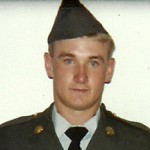 pave the way for those who will follow. They are a tough, almost street smart…or is it trench smart…soldier, who knows what to expect from guerilla warfare, or at least as much as anyone can know what to expect before they go to war. It occurs to me that a soldier going into a war is a completely different person than a soldier coming out of a tour of duty. You simply can’t spend time around all that death, not knowing if you will ever leave that place, and not be completely changed by it. No wonder so many of our soldiers come out of their tour of duty with Post Traumatic Stress Disorder. These men came into the war as kids, and came out feeling like old men. That is not the way they imagined their post high school years, but when you are serving your country, your high school/boyhood ideas have to be set aside to make way for the skills and mindset you must have to survive the life of a foot soldier.
pave the way for those who will follow. They are a tough, almost street smart…or is it trench smart…soldier, who knows what to expect from guerilla warfare, or at least as much as anyone can know what to expect before they go to war. It occurs to me that a soldier going into a war is a completely different person than a soldier coming out of a tour of duty. You simply can’t spend time around all that death, not knowing if you will ever leave that place, and not be completely changed by it. No wonder so many of our soldiers come out of their tour of duty with Post Traumatic Stress Disorder. These men came into the war as kids, and came out feeling like old men. That is not the way they imagined their post high school years, but when you are serving your country, your high school/boyhood ideas have to be set aside to make way for the skills and mindset you must have to survive the life of a foot soldier.

